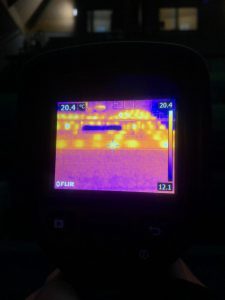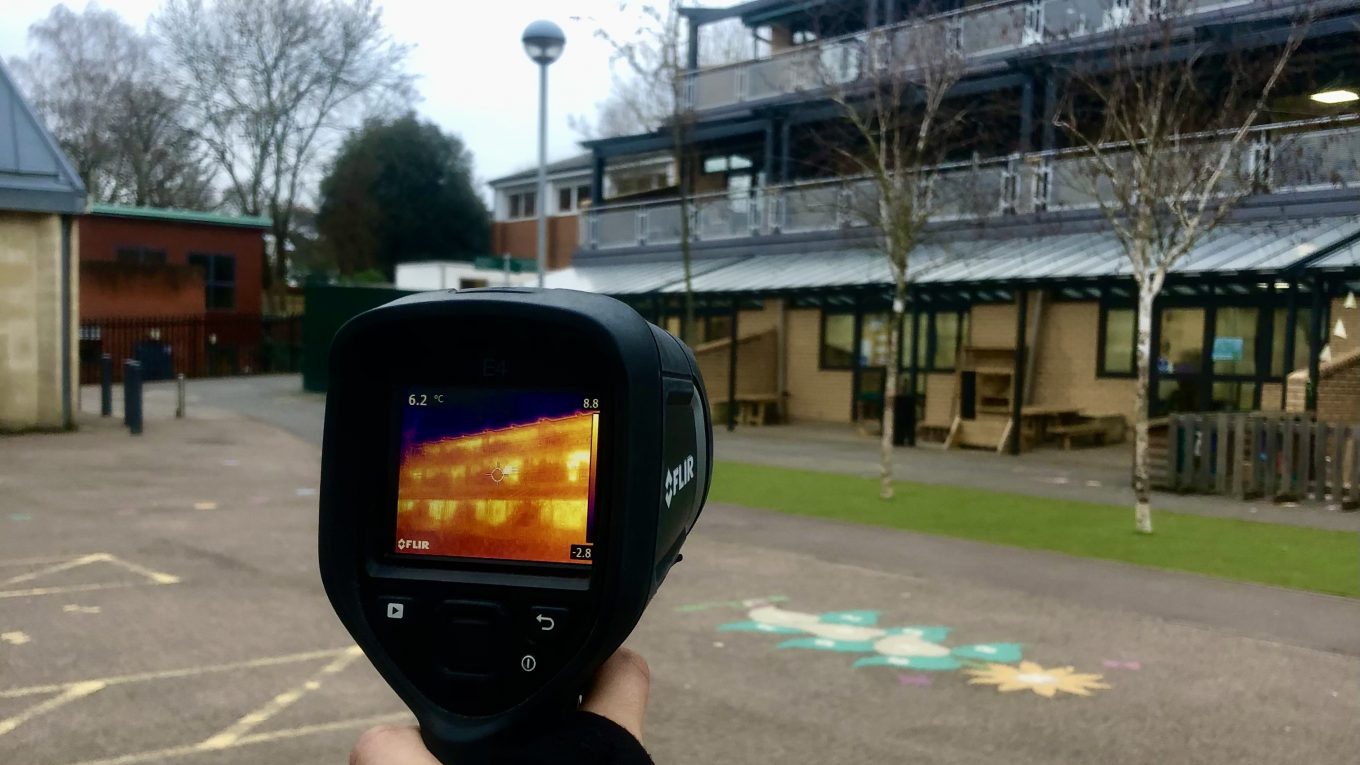Shadowing an energy auditor
On Wednesday, an energy auditor came to school. Bianca from Year 11 recounts her experience of shadowing him and shares what she had learnt about energy efficiency.
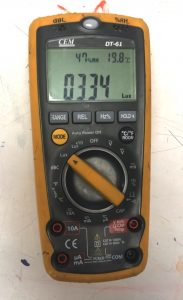
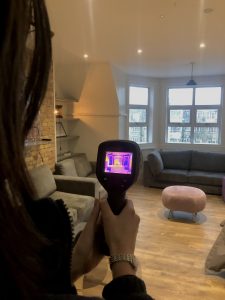
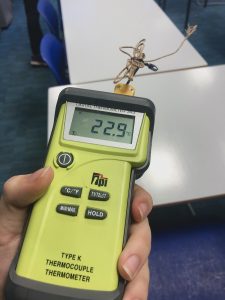
The audit
On Wednesday the school had an energy audit. The purpose of these audits is to check the school’s energy consumption. Have you ever felt your classroom was just too stuffy? Or shivering because of a draught that seemingly comes from nowhere? Energy audits seek to identify where energy may lack efficiency and so solve these problems of over or under heating.
Catherine, Indira and I followed the auditor around the Piper-Lewis building with Ms Sinclair. We helped him get some data about the energy use there. I had the job of holding a thermometer to measure air temperature (right). Catherine used the infrared camera (middle). While Indira used a luxmeter (left), as my fellow classicists will have inferred, to measure the light intensity. My favourite device had to be the infrared camera. Energy audits are concerned with how much energy is being wasted. This means it’s important to gauge how great heat loss is in order to improve efficiency. However, heat loss is invisible to the eye and so the camera opened our eyes to hidden pipes and other sources of heat as well as where that heat may be escaping.
New energy efficient technology
Managing heat loss isn’t as easy as just slapping some insulator on top of exposed pipes. Energy efficiency is concerned with how much heat is actually needed. The auditor explained that in some of the buildings he had inspected, they had used something called ‘optimal start-up’ and ‘weather compensation’ technology. The former ensures that boilers are only turned on when they need to be and the latter really says it on the tin. The UK’s weather is changeable to say the least and so, whilst on one day we might experience an unprecedented heatwave, a few weeks later we might be in for miserable cold showers. This technology ensures that as the weather changes, so does the amount of heat being sent out around a building. These two strategies apparently make all the difference when it comes to keeping energy costs at a minimum as well as making classrooms easier to sit in.
It was also interesting to test how much of Year 9 Physics I really remembered. An increase in surface area of course meant an increase in radiation. This applied to the cast iron radiators we found in the old sixth form house as well as the thinner tube light bulbs. These seemingly small details make all the difference in energy efficiency as the auditor explained ‘you need to match the technology to the delivery’.
An important facet of a school’s sustainability
Energy efficiency is an often overlooked yet vitally important part of moving forward to a greener future. Increased efficiency can lower greenhouse gases as well as decrease water usage. So, if you notice a classroom is unusually hot or cold, contact one of the Eco Committee members who can discuss and flag it up for you. If we work together to examine and improve our energy consumption, there will surely be a greener future ahead of us.
I leave you with possibly the best picture from the day. Is the Rutherford haunted? Or had year 10 just left after assembly? May you decide for yourselves…
